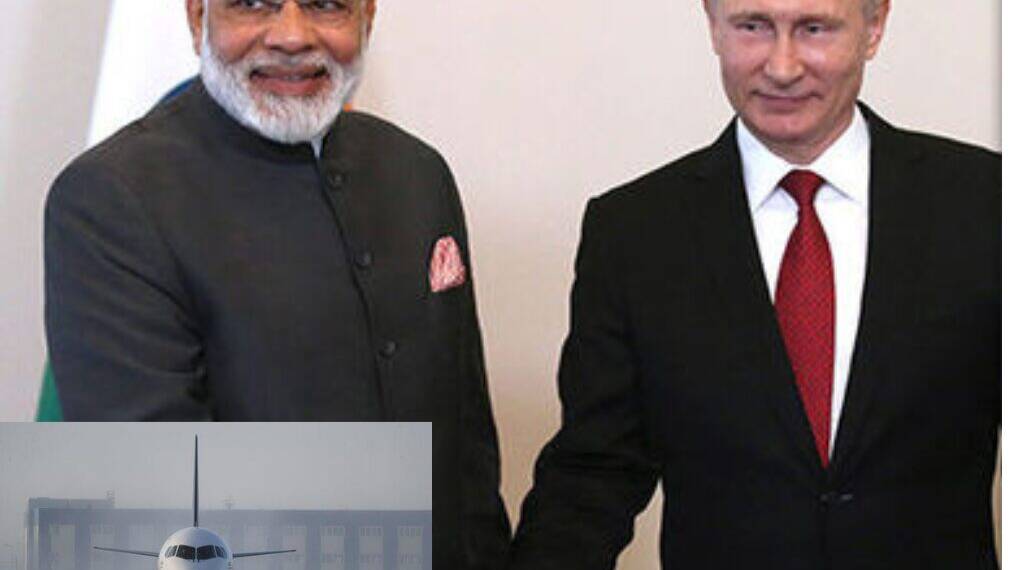In a landmark move that could reshape the global civil aviation landscape, India’s Hindustan Aeronautics Limited (HAL) and Russia’s United Aircraft Corporation (UAC) have signed a historic agreement to jointly produce the SJ-100 regional jet in India. The deal, signed in Moscow on October 27, 2025, marks the first time in nearly four decades that India will manufacture a complete passenger aircraft from the ground up.
The partnership represents a significant step in India’s efforts to localize high-technology manufacturing, while Russia looks to deepen industrial collaboration with strategic partners amid tightening Western sanctions.
A New Chapter in India’s Aviation Story
HAL, the state-owned aerospace and defense giant, described the SJ-100 deal as a transformative milestone. “The manufacturing of the SJ-100 aircraft marks the beginning of a new chapter in the history of the Indian aviation industry,” the company said in an exchange filing. “It’s a step towards fulfilling the dream of ‘Atmanirbhar Bharat’ — a self-reliant India — in the civil aviation sector.”
This agreement will see HAL build the SJ-100 commuter aircraft domestically, integrating Russian technology and design expertise with India’s growing manufacturing capabilities. The project’s scope extends far beyond simple assembly — it involves end-to-end production, a crucial differentiator from previous partnerships limited to component manufacturing.
The last time India produced a complete civilian aircraft was the AVRO HS-748, which HAL built under license between 1961 and 1988.
What is the SJ-100?
The SJ-100, a modern evolution of the Sukhoi Superjet 100, is a twin-engine, narrow-body regional aircraft designed for short- to medium-haul operations. It typically carries 75 to 100 passengers and has found success with 16 airline operators worldwide, with around 200 units currently in service.
Renowned for its fuel efficiency, modern avionics, and adaptable performance, the SJ-100 is well-suited to India’s rapidly growing domestic aviation market. HAL envisions the aircraft as a “game-changer” for India’s regional connectivity program, known as UDAN (“Ude Desh Ka Aam Nagrik”), which aims to make air travel accessible to smaller cities and rural regions.
According to HAL, India will need over 550 short-haul aircraft over the next decade to meet domestic demand — creating a vast opportunity for the SJ-100 to fill a critical gap in the market.
Strengthening the ‘Make in India’ Initiative
The SJ-100 program aligns directly with India’s “Make in India” and “Atmanirbhar Bharat” initiatives, which emphasize self-reliance in high-value manufacturing sectors such as aerospace, defense, and semiconductors.
The partnership is expected to generate thousands of direct and indirect jobs, foster skill development, and expand the aerospace supply chain through collaboration with Indian SMEs. It will also encourage foreign component suppliers to establish production bases within India.
While HAL has not disclosed the financial details or investment scale of the project, defense and industry analysts estimate that initial setup costs could exceed $1 billion, including tooling, certification, and infrastructure development.
India’s Expanding Aerospace Ecosystem
India’s aerospace manufacturing ecosystem has evolved rapidly over the past decade, driven by both domestic programs and foreign partnerships:
HAL manufactures the Tejas Mk-1A light combat aircraft, designed by India’s Aeronautical Development Agency (ADA).
Tata Advanced Systems Ltd. (TASL), in collaboration with Airbus Defence and Space, is building a final assembly line in Vadodara for the Airbus C-295 military transport aircraft.
Tata Boeing Aerospace Ltd., a joint venture between Boeing and TASL, produces fuselages and major aerostructures for the AH-64 Apache attack helicopter in Hyderabad.
Mahindra Aerospace and several other private firms contribute components and aerostructures to global aviation OEMs.
These partnerships underscore India’s emergence as a cost-effective, high-quality manufacturing hub for both defense and civil aerospace industries.
Strategic and Geopolitical Significance
The HAL-UAC collaboration arrives at a geopolitically sensitive time. It precedes Russian President Vladimir Putin’s visit to India in December 2025, signaling the continued strength of India-Russia strategic ties despite global tensions over Moscow’s war in Ukraine.
For Russia, the partnership provides a crucial industrial and diplomatic outlet amid ongoing Western sanctions. For India, it’s an opportunity to diversify its technological partnerships, gain aircraft manufacturing expertise, and assert industrial independence from Western aerospace suppliers.
The deal also comes against the backdrop of strained India–U.S. trade relations. In August 2025, Washington imposed 50% tariffs on Indian goods in retaliation for New Delhi’s continued imports of Russian crude oil. Despite pressure from Washington, India has maintained its energy and defense ties with Moscow — a signal of its strategic autonomy in foreign policy.
Market Response and Industry Outlook
Following the announcement, HAL’s stock dipped 0.67% to ₹4,725.35 per share on the Bombay Stock Exchange (BSE), while the Sensex closed 0.18% lower at 84,628.16 points. Analysts attributed the decline to short-term investor caution amid uncertainty about production costs and airline demand.
However, industry experts view the collaboration as a long-term growth catalyst for India’s civil aviation sector. If executed effectively, the project could position India as a regional manufacturing hub for small and medium-sized aircraft, challenging established players in Brazil (Embraer) and Canada (Bombardier/De Havilland).
Aerospace consultant A.K. Sharma noted, “This isn’t just about one aircraft. It’s about India proving it can design, certify, and manufacture world-class civil aviation platforms at scale. That would be a turning point for the entire region.”
A Defining Moment for Indian Aviation
The HAL-UAC SJ-100 program is more than a bilateral industrial venture — it’s a statement of intent. It reflects India’s ambition to transition from a buyer of aerospace technology to a co-developer and manufacturer, marking a new phase in the nation’s industrial modernization.
If successful, the SJ-100 could become the flagship of India’s re-entry into commercial aircraft production, laying the foundation for future indigenous projects and reinforcing the country’s role as a strategic technology partner in global aviation.
As President Putin prepares to visit New Delhi later this year, the aircraft project stands as a powerful symbol of enduring India–Russia cooperation, industrial self-reliance, and a shared vision for a multipolar technological world.








